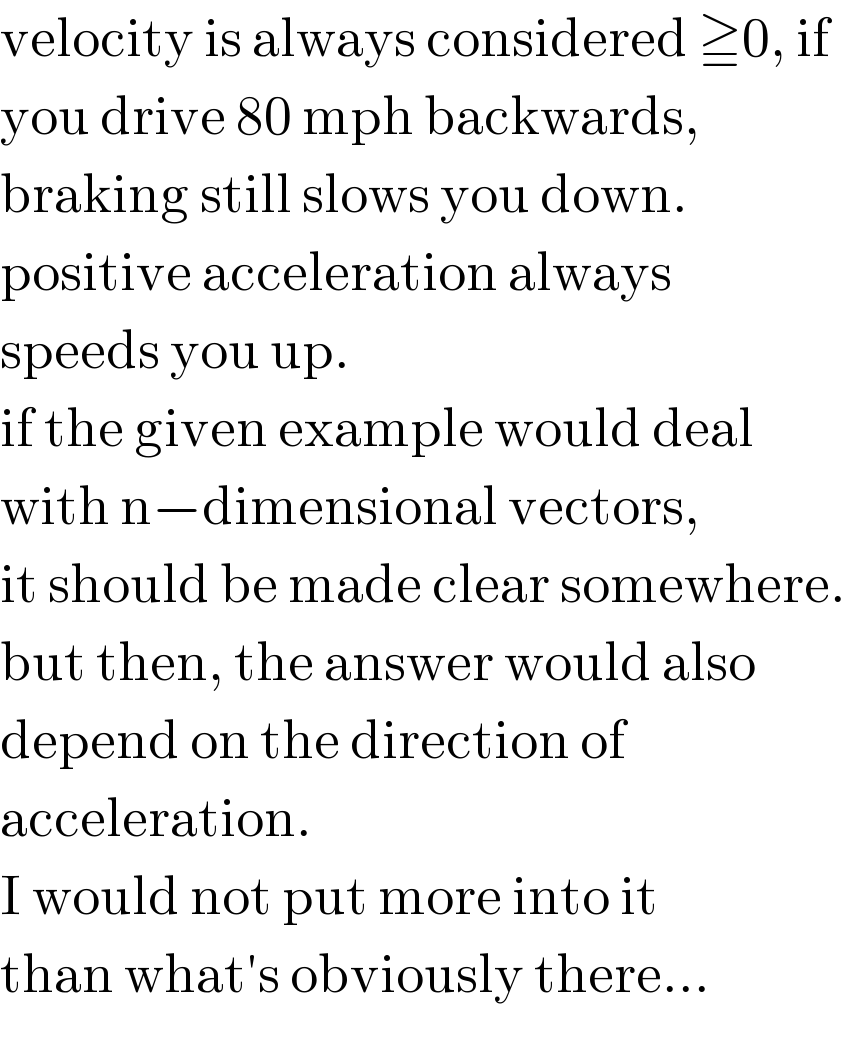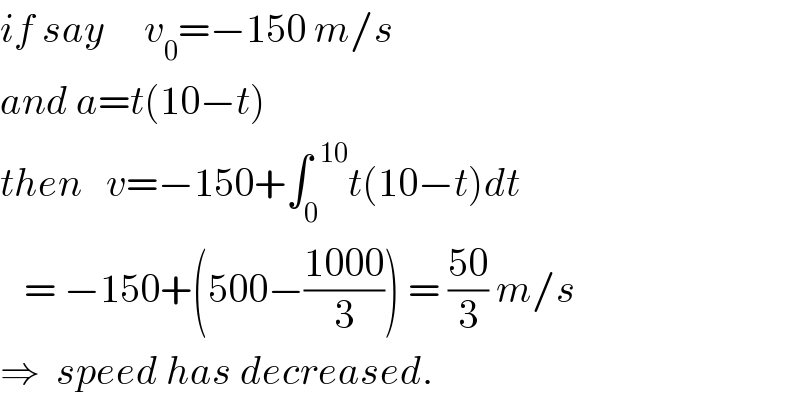
Question and Answers Forum
Question Number 30961 by Tinkutara last updated on 01/Mar/18

Commented by ajfour last updated on 01/Mar/18

Commented by MJS last updated on 01/Mar/18

Commented by ajfour last updated on 01/Mar/18

Commented by Tinkutara last updated on 01/Mar/18
But how does it matter anyway? After 10 s it would be maximum because area under the curve will be maximum whether it starts from rest or not.
Commented by MJS last updated on 01/Mar/18

Commented by Tinkutara last updated on 01/Mar/18
No it is only 4⃣. Now got it. Thanks ajfour Sir.
Commented by MJS last updated on 01/Mar/18

Commented by ajfour last updated on 01/Mar/18

Commented by Tinkutara last updated on 01/Mar/18
Yes I also thought this way and it became clear.
Commented by MJS last updated on 01/Mar/18

Commented by MJS last updated on 01/Mar/18

Commented by ajfour last updated on 01/Mar/18

Commented by MJS last updated on 01/Mar/18

